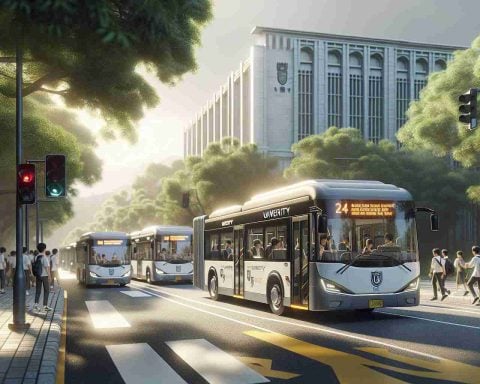A shocking incident in Stockton has raised awareness regarding the increasing crime targeting electric bike owners. Recently, a man in his sixties was viciously attacked and robbed of his Cube Reaction Race E-bike, highlighting a troubling trend in urban environments where such thefts are becoming alarmingly common.
The incident unfolded in broad daylight when two assailants on a Yamaha motorbike approached the victim. They aggressively confronted him, initiating a physical altercation that left the man with facial injuries. Witnesses report that the attackers were particularly brazen, assaulting their target before stealing the prized electric bike. After the crime, one assailant sped away on the stolen e-bike while the other fled on the motorbike.
As electric bikes gain popularity for their convenience and environmental benefits, they have also attracted the attention of criminals. With urban centers witnessing more incidents like this, there is a growing need for enhanced safety measures for cyclists and better policing strategies. Local law enforcement is actively seeking information from witnesses and anyone who may have captured the event on dashcam footage, emphasizing the community’s role in combating this rise in bike theft.
As the community grapples with this unsettling trend, an urgent conversation is necessary about how to protect vulnerable individuals and ensure public safety amidst the increasing presence of electric bikes on city streets.
The alarming rise in electric bike thefts, such as the recent incident in Stockton, reflects broader trends in the electric mobility industry. As cities continue to adapt to eco-friendly transportation options, the demand for electric bikes (e-bikes) has surged. These vehicles are increasingly favored for their convenience, sustainability, and ability to reduce traffic congestion, particularly in urban settings.
Industry Growth
The global e-bike market has experienced rapid growth over the past few years and is projected to continue expanding at a significant rate. According to various market analyses, the global e-bike market size was valued at approximately USD 23 billion in 2021 and is anticipated to grow at a compound annual growth rate (CAGR) of around 8-10% from 2022 to 2030. Factors contributing to this growth include rising fuel prices, increasing urbanization, heightened environmental awareness, and advancements in technology that improve the efficiency and affordability of e-bikes.
Market Forecasts
Looking ahead, the market is expected to witness a diversification in e-bike models, accommodating different consumer needs—from urban commuting to recreational riding. This evolution could lead to a broader acceptance of e-bikes across demographic segments, with increased sales likely in Europe, North America, and parts of Asia-Pacific. However, with this growth comes the challenge of ensuring safety and security for users in increasingly crowded urban environments.
Industry Issues
The rise in electric bike thefts is not just a localized issue but part of a larger concern regarding urban crime and public safety. The popularity of e-bikes makes them attractive targets for thieves, and as reported incidents increase, so does the fear among potential buyers to invest in higher-end electric bikes. Policymakers and cycling advocates are urged to collaborate on strategies to improve security measures—such as better locks, GPS tracking systems, and increased law enforcement presence in areas known for thefts. Communities are also encouraged to foster a culture of vigilance, where residents look out for each other and report suspicious activities.
The crime wave surrounding e-bikes highlights the need for a balanced approach toward the adoption of green technologies. While e-bikes offer significant environmental benefits, without adequate protection and awareness, their proliferation could be stunted by the fear associated with theft and personal safety.
As we navigate this complex landscape, it becomes essential for all stakeholders—from manufacturers to local governments—to engage in comprehensive planning that addresses safety concerns while encouraging the growth of the e-bike market. The dialogue surrounding theft prevention and cycling safety will be critical in shaping a sustainable future for electric mobility within our communities.
For further insights and developments in cycling safety and urban commuting, you can visit Bike League or National Association of Bike Dealers.

















